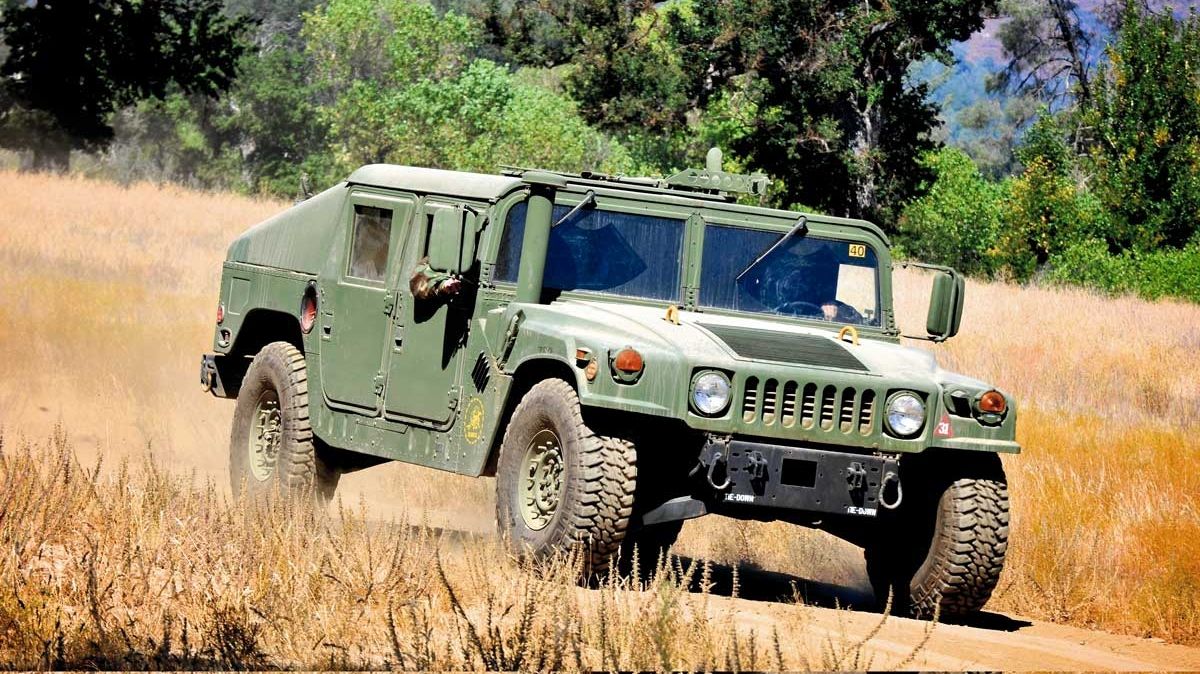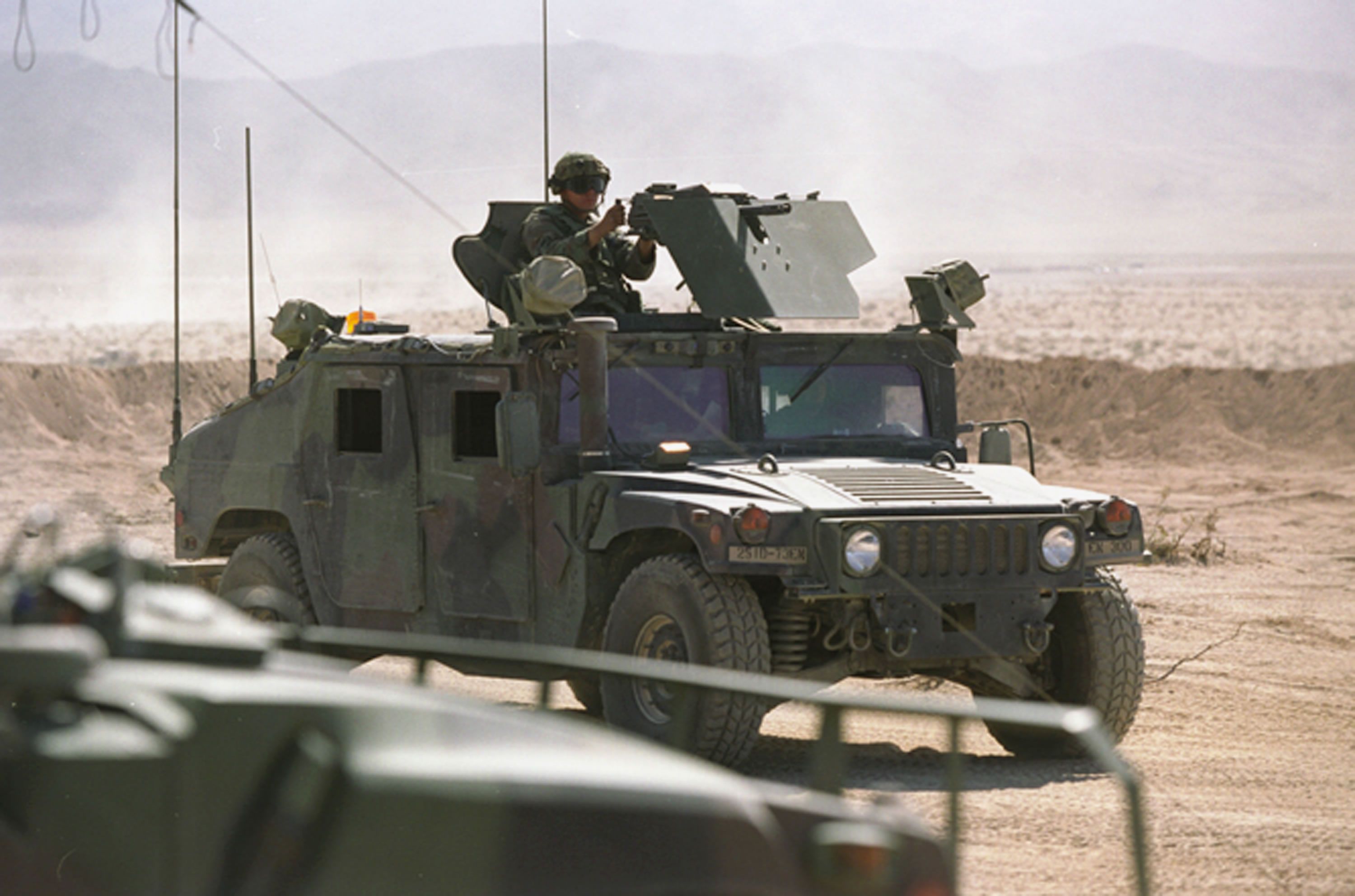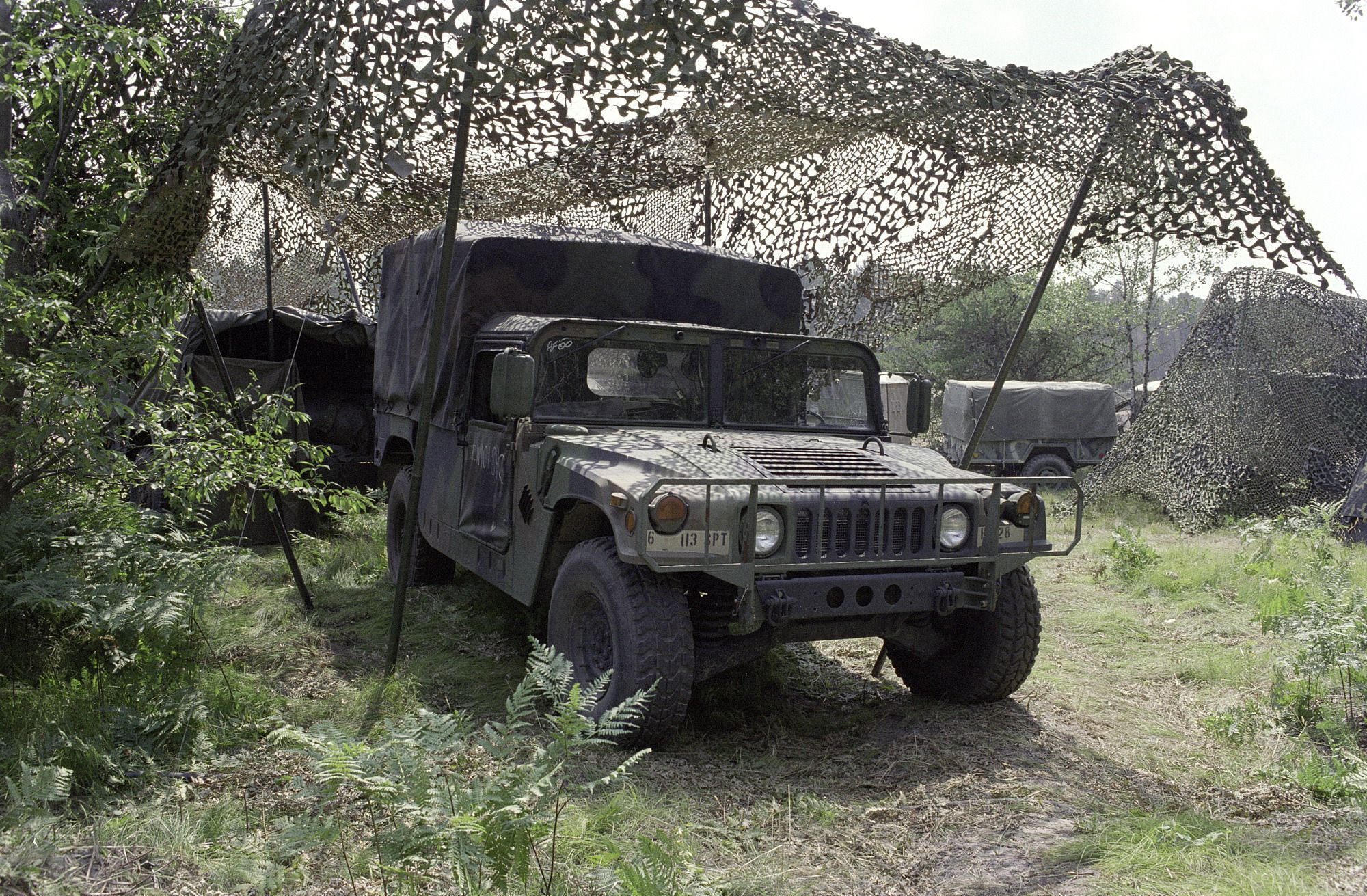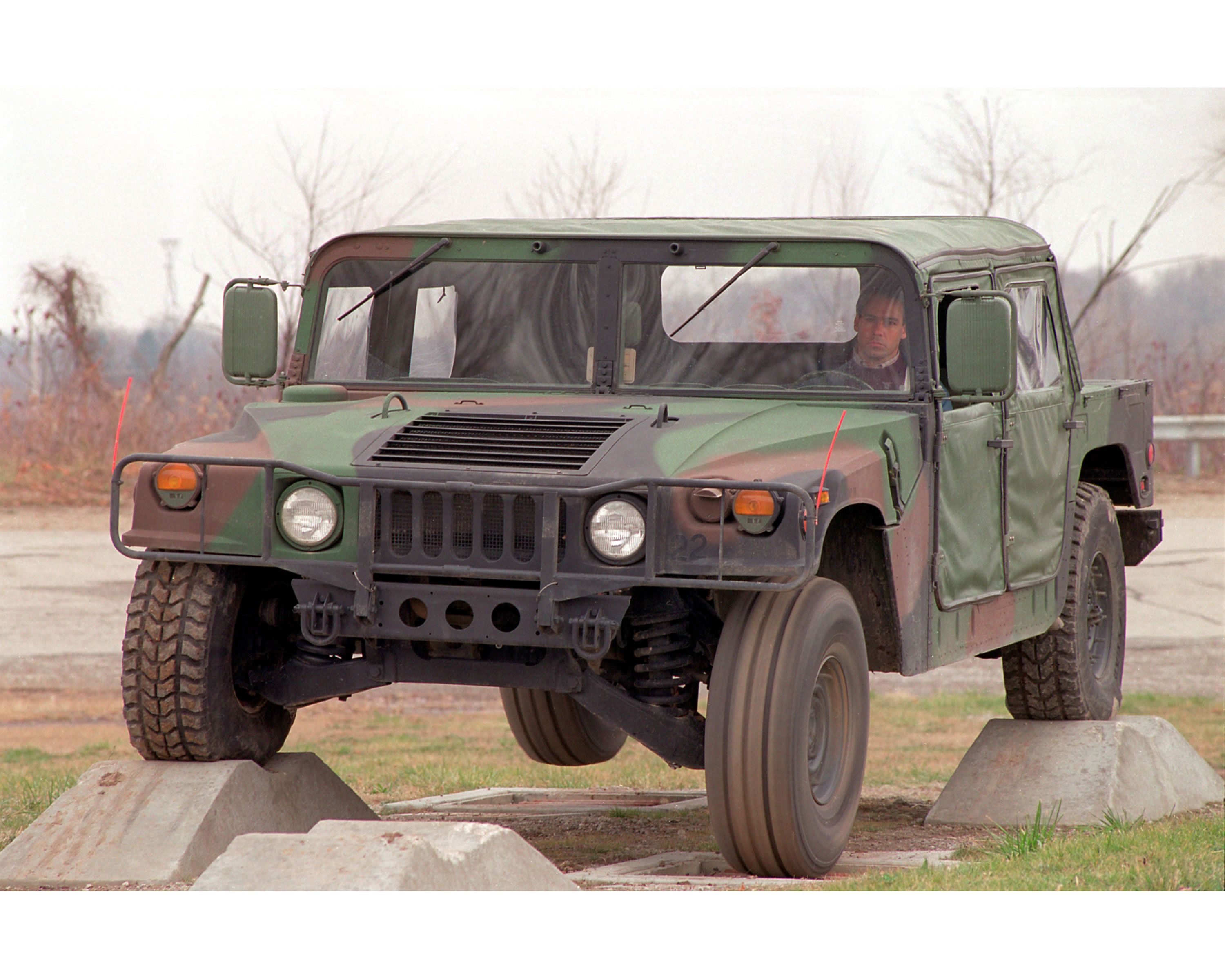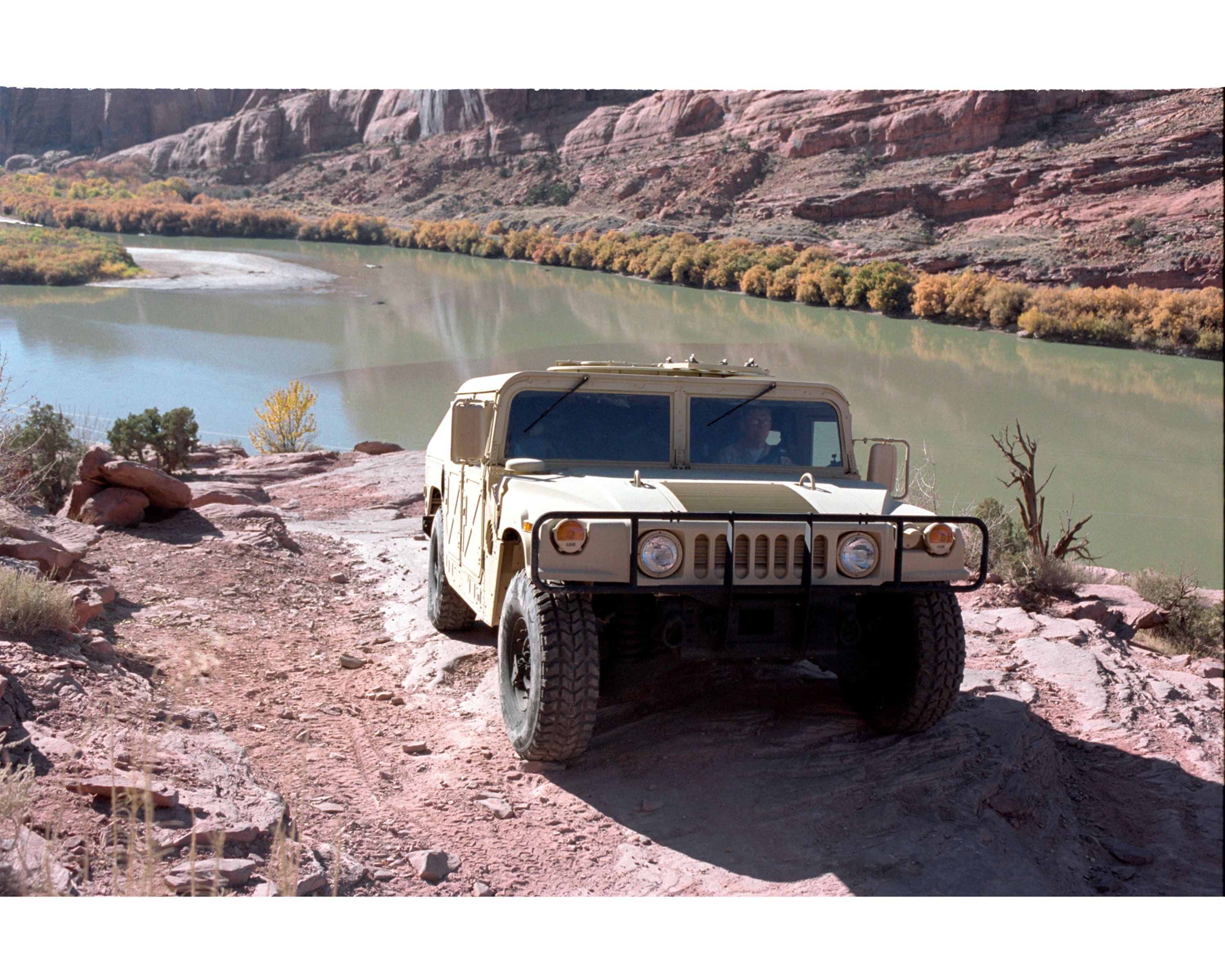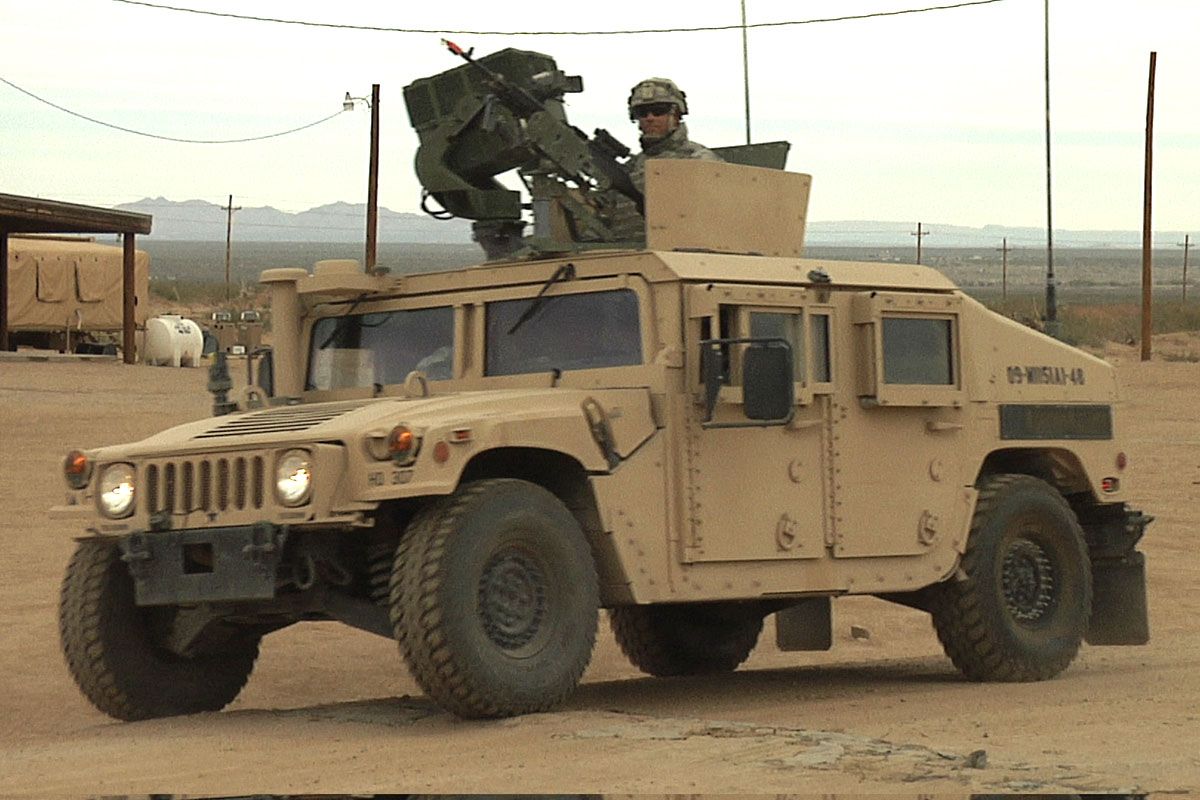The importance of a small, relatively light, all-terrain and multi-purpose vehicle for a modern military cannot be overstated. For the U.S. military, this role is filled by the HMMWV, or “Humvee”, which took over the job from the Jeep->ke40 in 1984. The key to the success of the Humvee is its simplicity, which makes the platform more adaptable and easier to repair. The ability of one vehicle to fill so many roles means less training for personnel. In fact, the Humvee has 15 different official configurations, with a fair degree of variation within those configurations, depending on the mission. My experience with the Humvee has primarily been with the unarmored troop/cargo carrier configuration without a winch, as I am in a quartermaster unit.
There are 44 major components shared between all of the different configurations of the Humvee, and they're all swappable, making things easier on mechanics. That said, the engines actually come in two varieties, a 6.2-liter diesel V8 and a 6.5-liter turbodiesel V8. Each of these makes 150 horsepower, but the turbodiesel version has a higher payload capacity: 4,400 pounds compared to 2,500.
Configurations
Humvees come with a couple of different levels of armoring. They also frequently come completely unarmored, although these “thin-skinned” Humvees have proven to be something of a problem in areas where IEDs pose a significant threat. For armored Humvees, there is basic armor and supplemental armor, although even this is often inadequate when it comes to bigger IEDs, so vehicles like the MRAP (Mine Resistant Ambush Protected) have had to take over many of the duties of the Humvee in some areas. In certain configurations, a turret can be mounted for a variety of different weapons. This includes but is not limited to: an M240 light machine gun, an M2 heavy machine gun (the “Ma Deuce”), or in increasingly rare instances: a Mk 19 automatic grenade launcher. There are also several different configurations of the Humvee made specifically to carry TOW missile launchers, a wire-guided anti-armor weapon. After weapon carrying, most configurations are dedicated to various forms for ambulances, carrying either 2 or 4 litters (stretchers).
Driving
The Humvee is very easy to drive, almost surprisingly so. The controls are simple and broadly similar to civilian vehicles, and it has an automatic transmission. The part that takes some getting used to is the width, which comes in at 85 inches. That's quite a lot, but it'll still make it through the McDonald's drive through, and there are some civilian vehicles which get pretty close to this. The Rolls-Royce Phantom,->ke1283 for example, is 78 inches wide. In truth, it's more that the Humvee feels incredibly wide, partly due to the interior layout. This is every bit as spartan as you would expect in a military vehicle, and the seats are pretty much as uncomfortable as is possible while still being considered seats. There is a large transmission tunnel running right through the center, and this is where much of the feeling of width comes from. It also means that the distance between you and anyone sitting next to you means that you're going to have to yell to be heard when traveling at highways speeds.
Design and use
The tunnel travels through the passenger compartment instead of under it as a way of giving a lot of ground clearance (16 inches when loaded) while still keeping overall height, and therefore center of gravity, low. This combined with the wide stance, steep approach and departure angles and of course four-wheel-drive, make for a hugely capable off-road vehicle. It obviously isn't going to be able to go everywhere that a tracked vehicle can go, but all-terrain capability was one of the primary design criteria. When equipped with a snorkel, it can ford up to 5 feet of water. The Humvee can be sling loaded and carried by a helicopter, and can even be dropped from low altitudes with a parachute.
The design for the Humvee was first drawn up by AM General in 1979, after a failed attempt by Lamborghini ->ke44to win a contract with the LM002 in 1977. Production of the first batch of 2,334 units started in 1983, with total production now having exceeded 281,000 units. The Humvee first saw combat in Panama in 1989, and much more extensively in the Gulf War in 1991. It did quite well in these types of conventional warfare, even without much in the way of armor, because in conventional warfare it isn't used as a front-line vehicle and therefore isn't generally exposed to much enemy fire.
Conclusion
Things changed in Somalia in 1993, where Army Rangers using Humvees for prisoner/casualty extraction came under heavy enemy fire. With this being far from the last time that Humvees would be used in urban warfare, an effort was made to up-armor the vehicle to be able to stand up to small arms fire. This was successful to a degree, but fighting in Iraq and Afghanistan meant dealing with IEDs and even an up-armored Humvee isn't really suited to that.
This is what the MRAP was designed for, and it is simply hands-down better for urban and asymmetric warfare than the Humvee. By 2007, the Department of Defense had made the acquisition of more MRAPs its number one priority, and by 2008, roadside IED attack fatalities were down 90 percent. This is not to say that there is no longer any use for the Humvee. As a scout or support vehicle, it still does its job well, and is generally better off-road than an MRAP. To say nothing of the fact that an MRAP costs anywhere from 2 to 4 times as much as a Humvee. But there is a right way and a wrong way to use a Humvee, and in an era when so many conflicts are of the counterinsurgent variety, there simply aren't many opportunities to use Humvees the right way.

